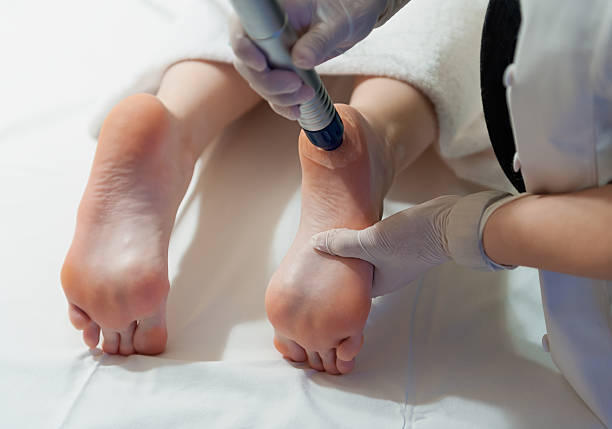
Shockwave therapy is a non-invasive treatment that uses sound waves to treat chronic pain. The treatment has been proven successful in a number of scientific studies and can help to trigger the body’s natural healing response.
It increases blood flow to the area and can help to break down scar tissue, which can be a cause of pain. The treatment usually takes a few minutes and is comfortable for most patients.
Exploring the Frontiers of Migraine Treatments
Migraine is a common, debilitating disorder with significant economic costs and reduced quality of life. It is the costliest neurological disorder and is associated with a wide range of adverse effects, including anxiety, depression, sleep disturbances and chronic pain conditions. In addition, migraine has been linked to obesity and cardiovascular events in women.1,2,3
The diagnosis of migraine should be made by a physician who is experienced in the management of headache disorders and can distinguish it from other primary and secondary (including temporomandibular joint dysfunction) headache disorders, as well as from tension-type headache (TTH). TTH lacks the classical features of migraine, such as bilateral pain, pulsating character or aggravation by routine physical activity4.
Acute treatment for migraine includes medication, preferably with a preventive component, and ancillary therapies, such as non-pharmacological techniques, dietary supplements and biofeedback. However, evidence for a number of ancillary therapies is limited. In particular, acupuncture and psychophysiological therapy do not appear to be effective. In addition, many of these interventions are expensive and may not be available to all patients.
Preventive medications that have been shown to be effective include topiramate, onabotulinumab and CGRP monoclonal antibodies. Topiramate is the drug of choice owing to its lower cost, while onabotulinumab and erenumab are currently restricted to those patients in whom two or more other preventive medications have failed122,123.
Patient preference surveys have shown that a number of attributes drive patient decisions regarding the use of new preventive migraine treatments, such as a reduction in migraine frequency and/or severity, and consistent treatment effectiveness. In addition, patients appear to value a lower risk of side effects when choosing an additional treatment option.
A stepped care approach is recommended for the treatment of migraine, with an initial dose and dosing regimen that is tailored to the individual patient’s response. Treatment adherence is generally poor, but simplified dosing schedules have been found to increase compliance32. Ideally, pausing of preventive medications can be considered after six to 12 months of successful treatment, as this minimizes unnecessary drug exposure and allows some patients to manage their symptoms with acute treatments alone.
Non-Invasive Treatments
Shockwave therapy is a treatment that uses sound waves to help heal injured tissue. It can be used in place of surgery to treat many injuries, and it also helps with pain that doesn’t respond to medication. The treatment is not painful, and it only takes a few minutes to complete. It may take several sessions for the injury to fully heal.
The shockwaves stimulate the body’s natural healing processes. They trigger the formation of new tissue and increase blood flow to the area. In addition, they help break down calcific deposits embedded in the damaged tissue. This type of treatment is especially effective for chronic aches and pains in the feet and back.
When the shockwaves hit the damaged tissues, they cause a mechanical reaction in the tissue that has been found to improve bone and tendon healing. It also promotes the growth of new blood vessels and increases cell membrane permeability. The shockwaves are delivered through a small device that looks like an ultrasound wand. They can be delivered over a large surface area or targeted to specific areas. The treatment is not painful, although there may be slight discomfort depending on the area being treated and how close it is to a bone. Your practitioner may rub a gel on the treatment area to reduce your discomfort.
There are some situations where this treatment is not appropriate. For example, it should not be used on people who have a blood-clotting disorder or a circulation problem. This treatment is also not good for people who are pregnant or breastfeeding.
Shockwave treatment is also not a good option for people with open wounds or tumors. It is important to discuss all of your options with your healthcare provider to make sure this treatment is right for you.
A medical procedure is considered non-invasive when there is no skin break or contact with the mucosa or internal body cavity through a natural or artificial body opening. For example, a deep palpation exam or an ear examination fall into this category, but a rectal exam does not. Extracorporeal shock wave lithotripsy is another non-invasive medical treatment that has been shown to be effective in breaking down kidney stones and gallstones.
Non-Surgical Treatments
For those that have not found relief through medication or other non-invasive treatments, shockwave therapy may be a viable option. It works by sending sound waves into the body to stimulate healing and break up scar tissue. The shockwaves create micro-cavitation bubbles that penetrate the tissues, triggering the cell regeneration process to heal damaged tissues and increase blood flow in the area. The treatment can also help to relieve pain by over-stimulating the pain transmission nerves.
Shockwave therapy can be used for many types of injuries and conditions, including plantar fasciitis, tennis elbow, tendonitis in the shoulder and achilles tendinitis. It is usually performed by a physical therapist and can be done at the comfort of your own home. The therapist uses a hand held device that is connected to a machine that turns compressed air into sound waves. A gel is applied to the skin before the shockwaves are delivered. Depending on the area, the therapist can use either focused or radial shockwave therapy.
During the shockwave treatment, a small amount of inflammation will occur in the treated area, but this is normal and helps with the healing process. You may experience pain in the days following the shockwave treatment, but this is also normal and should subside. It is recommended that you avoid taking anti-inflammatory medications such as ibuprofen and acetaminophen after the treatment, as they can counteract the effect of the shockwaves.
Shockwave therapy has been around for a while as a non-invasive treatment for kidney stones and orthopedic injuries. More recently, urologists have started to offer it as a non-invasive treatment for erectile dysfunction. It is still considered experimental, but it has shown promising results so far. It is typically offered to patients that have not responded to phosphodiesterase inhibitors or other medication options. If you are interested in learning more about if this is the right treatment for you, talk to your urologist. They can advise you on the best protocol to follow. They can also direct you to a reputable provider of shockwave therapy. The urologist will likely recommend that you perform Kegel exercises to strengthen your pelvic floor muscles in conjunction with the shockwave treatment to improve your chances of getting an erection.
Alternative Migraine Treatments
Many migraine patients look outside the traditional pharmacological approach for treatments, and a variety of alternative therapies have been suggested. Some of these have been shown to be effective, while others haven’t been well-studied. It’s important to discuss all of your options with your doctor and be able to understand the risks involved in any treatment that hasn’t been approved by the FDA.
Medications used for abortive (symptomatic) treatment of migraine range from simple analgesics, such as nonsteroidal anti-inflammatory drugs or acetaminophen to medications that suppress the release of brain chemicals that cause pain. These include a group of drugs called triptans, which are usually taken just before the start of an attack and can prevent or abort an attack in more than 90% of migraineurs. Anti-seizure medications and a class of drugs called calcitonin gene-related peptide (CGRP) antagonists, such as rizatriptan and almotriptan, also are commonly used. Other atypical abortive treatments, such as intranasal ergotamine and dihydroergotamine, can be used for patients who don’t respond to or tolerate oral medications.
There is some evidence that acupuncture reduces the frequency of migraine attacks, but there’s also no evidence that it can prevent an attack once it’s started. A 2016 study of 105 migraineurs who were randomized to receive 8 sessions over 6 months of either acupuncture, sham acupuncture or medication treatment found that acupuncture improved headache days per month, NSAID and opioid use and HIT-6 scores compared to sham acupuncture and medication. Acupuncture involves sticking needles into various points in the body to alleviate pain.
Other mind/body treatments for migraines include dietary supplements and relaxation techniques. Supplements that have been shown to help with migraines include riboflavin, CoQ10, magnesium, feverfew and butterbur. Meditation, tai chi and yoga are mindfulness-based therapies that have been shown to be helpful. Biofeedback is a type of relaxation training that helps you learn to control your body’s signals, such as muscle tension and heart rate. A machine records these and displays them on a screen to help you relax your muscles.
Anecdotal reports suggest that a daith piercing, the piercing of the innermost cartilage fold in the ear, can ease migraines. The earlobe isn’t recommended for this type of piercing, however, because it can lead to ringing in the ears and tinnitus.






